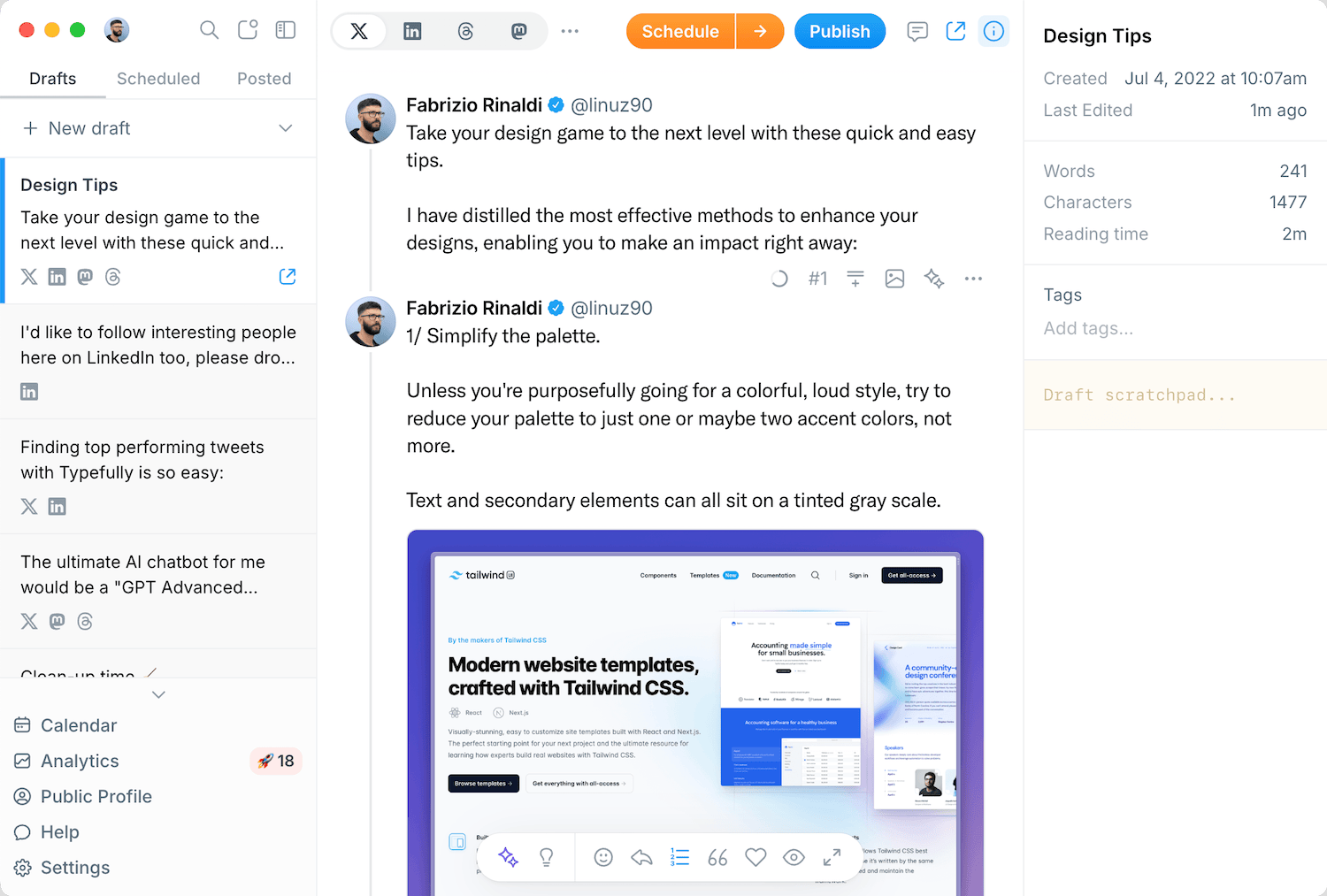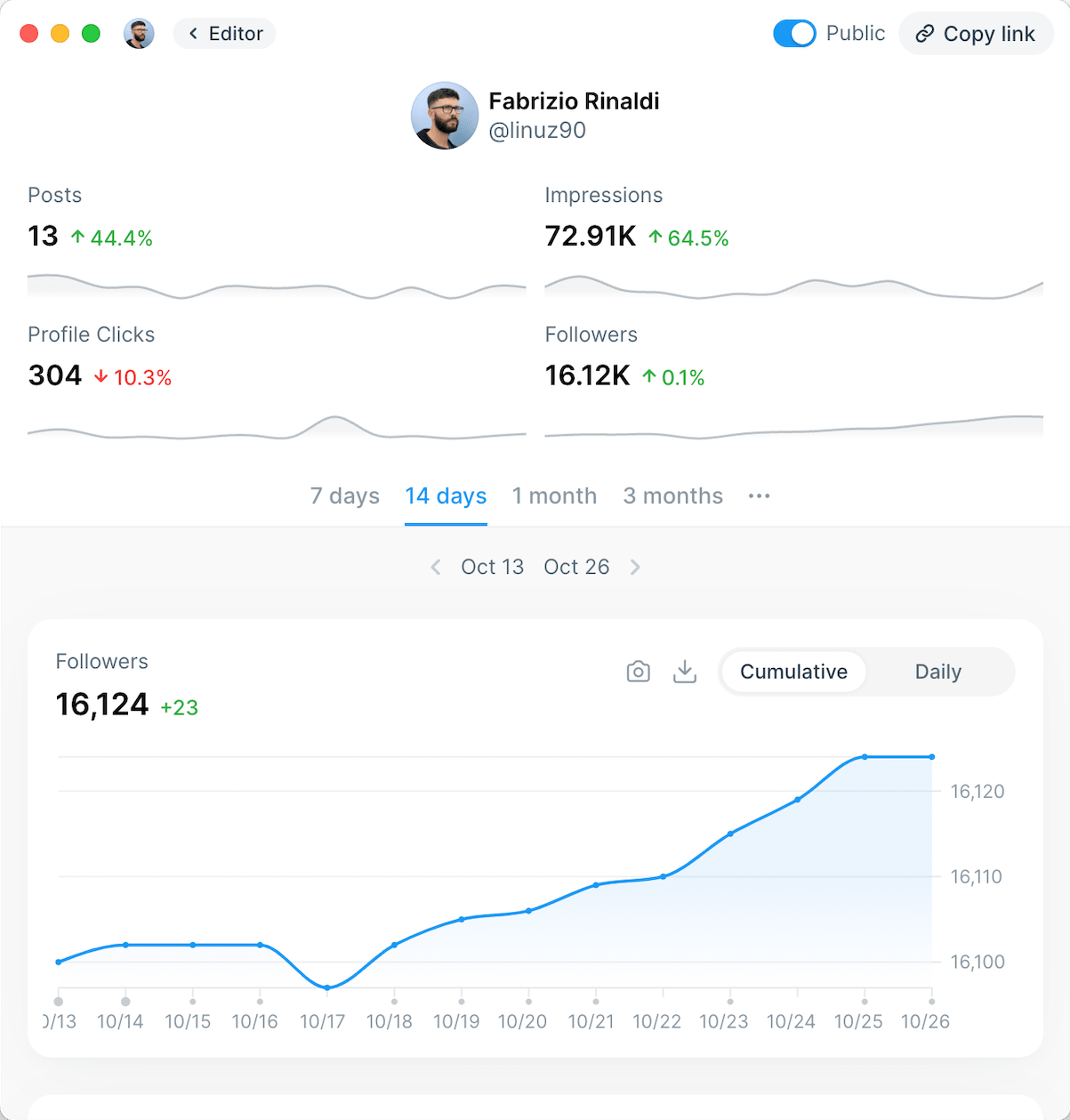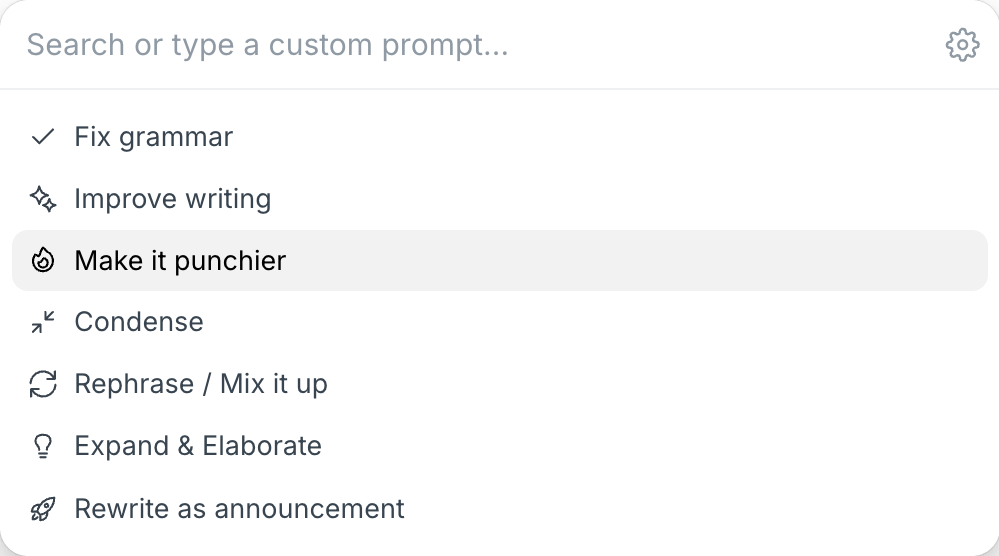To paraphrase Benjamin Franklin's famous quote: “Nothing is certain in this world except death, taxes, and Twitter.” While it’s still up for debate whether the founding father said all three, it’s impossible to deny its relevance.
With its inception in 2006, Twitter is now the ninth most visited website globally. Everybody from the President of the United States to your favorite barista has an account. With around 396.5 million users worldwide, it’s easy to see why it’s such a critical platform for engagement.
Twitter’s undeniable reach makes it one of the best tools to amplify your message. By embedding tweets via Twitter Publish, you’re forming an influential collab that benefits your website and social media audience.
Think of it like killing two birds with one stone (sorry Twitter logo).
So if you want to shout from the rooftops about your brand (and why wouldn’t you), Twitter is the Burj Khalifa of rooftops. And here at Typefully, we wrote the book on reaching an audience. By replicating a more efficient Twitter experience, we’re turning your online presence up to a Spinal Tap eleven!
From embedded Twitter feeds to Twitter widgets for your website, our creative application means you’re part of the conversation. Let’s look at how Twitter Publish and embedded tweets are a duo that’s hard to ignore (think of it as if Kanye West teamed up with Harry Styles).
What are embedded tweets on Twitter Publish?
Simply put, embedded tweets transfer your Twitter content onto your website or blog. This can include a single tweet, Twitter replies, a Twitter feed, Twitter photos, videos, or media cards. Embedded content keeps the look and feel of Twitter meaning users are more accustomed to your site from the get-go.
By embedding Twitter feeds and tweets, you’re opening up your digital conversation to a larger audience, increasing your online visibility.
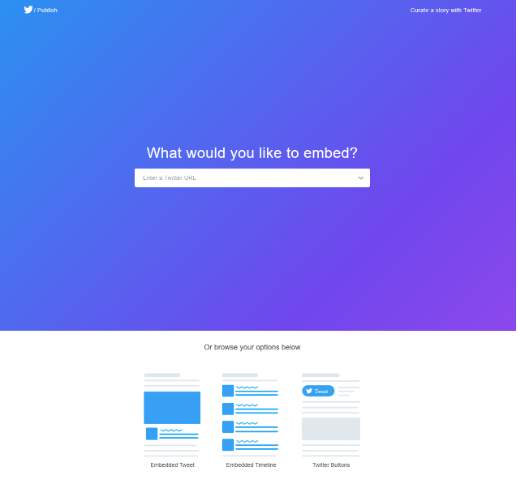
Being the powerhouse that it is, Twitter has thought of everything. Twitter Publish lets you embed not only tweets but timelines and Twitter buttons as well. And it only takes a couple of clicks. You can even customize the look of your Twitter content too.
And as you're probably aware, businesses invest in Twitter to boost their marketing strategy and grow their audience. And with Twitter revolutionizing online communication, it’s no wonder brands that spend more on Twitter are seen as more culturally relevant.
Examples of embedded tweets and embedded Twitter feed
Single tweet:
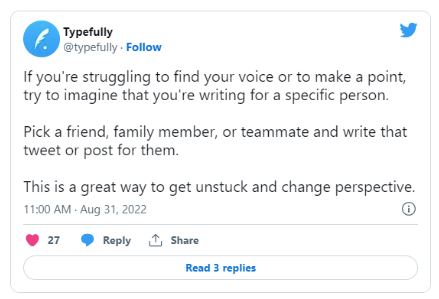
Reply including original tweet:
Including replies is a great way to showcase additional information relating to your initial tweet. Plus, tweets are limited to 280 characters, so you can give more substance to your content. It also allows you to create engaging tweets as your replies act as chapters to the reader.
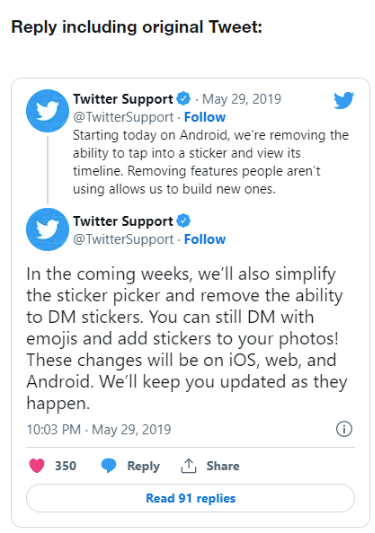
Replies are also the perfect opportunity to social-proof your website, as your tweets can include reviews and endorsements of your customers.
Benefits of embedding your Twitter
Nothing engages your customers more than familiarity. That’s why we have catchy slogans and celebrities advertising anything and everything (looking at you, George Clooney!). Smaller businesses don’t have the luxury of a blank checkbook, they need to think ahead.
Let’s look at why embedding your Twitter is a good tactic moving forward:
- As your website is packed full of extra content, it will reduce the bounce rate of your visitors
- Promotes your products and services in creative and engaging ways
- Website followers become Twitter followers
- Displays your content in a rich, media-forward setup
Embedding your Twitter updates on your website is a great way to repurpose content. It also allows you to pick and choose the best content for your site without having to do much extra work.
How to embed a tweet?
If you think that embedding a tweet is an impossible task, it couldn't be more simple. Every tweet that appears on Twitter includes an embed code that can be easily copied using Twitter’s publishing widgets.
Let’s take a look at the steps needed to embed a Tweet onto your website.
1. Find the tweet you want to embed.
First things, first, you need to find the tweet you want to embed.
2. Click on the three dots in the corner.
Once you have selected your tweet, the next step is easy. Click on the three dots in your tweets corner to reveal a dropdown menu.
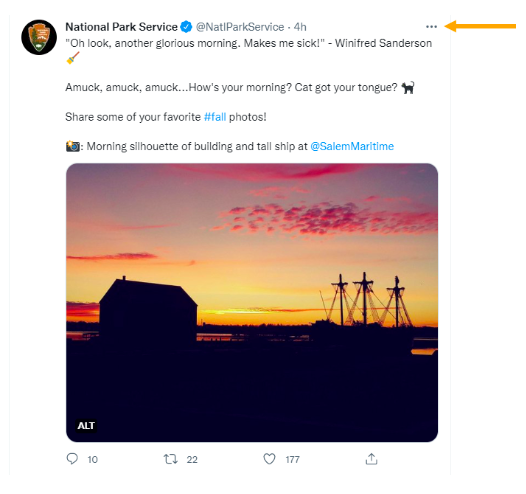
3. In the dropdown menu, select Embed Tweet.

4. The Twitter Publish page should appear.
By clicking on the Embed Tweet option, you’ll automatically move to the Twitter Publish page. From here, you’ll be able to embed your tweet. To customize the appearance of your selected tweet, simply click on the set customization options.

From here, you’ll be able to choose settings related to color and language. If the tweet is part of a larger conversation and you don't want to display other tweets attached, check the Hide Conversation box.
5. Once you’ve made your changes (if any!), click Update.

6. Click Copy Code, then go to your website or blog.
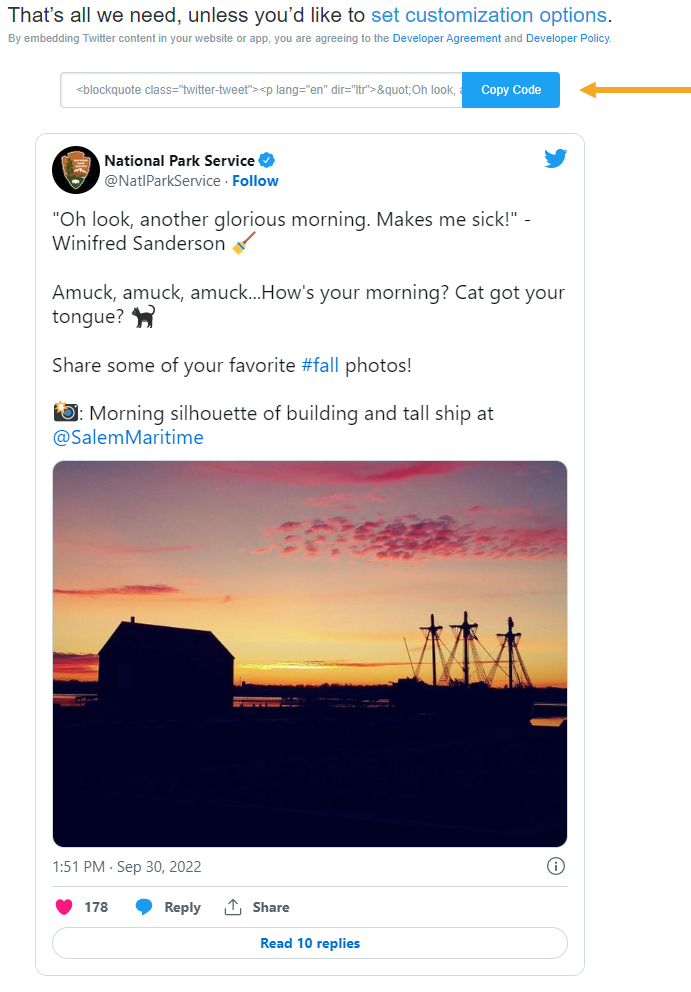
After you’ve clicked on Copy Code and gone to your website, you can use your site's publishing tools to paste the HTML snippet. And then you’re done. Your tweet, along with any media, photos, or videos will be embedded.
Embedded tweets include two-parts: an HTML snippet hosted on your web page and the Twitter for Websites JavaScript that converts the snippet into a fully rendered tweet.
How to embed a Twitter feed
Even though single tweets skyrocketed Twitter's popularity, for many users, taking advantage of Twitter threads has become the norm. A killer Twitter thread embeds feeds and videos, so your content hits all the bases.
Twitter’s publishing widgets make it easy as pi to implement your feed into your site. Let’s have a look at Twitter’s embedding tool to get the job done.
The Twitter buttons available include:
- Share Button
- Follow Button
- Mention Button
- Hashtag Button
- Message Button
These tools can turn your business engagement from a whisper into a scream! By adding these buttons to your content, you’re expanding your reach and social proofing your business.
Let’s take a look at how to implement these tools.
1. Go to Twitter’s embedding tool and select the Twitter Buttons option.

From here, you’ll go to a variety of social media sharing options for you to choose from.
2. Select the Twitter button you’d like to use.

For this example, we will select the Follow Button.
3. Copy and paste your chosen site’s URL into the box below.
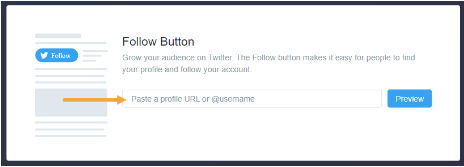
4. Copy and paste the generated code onto your site and you’re done!
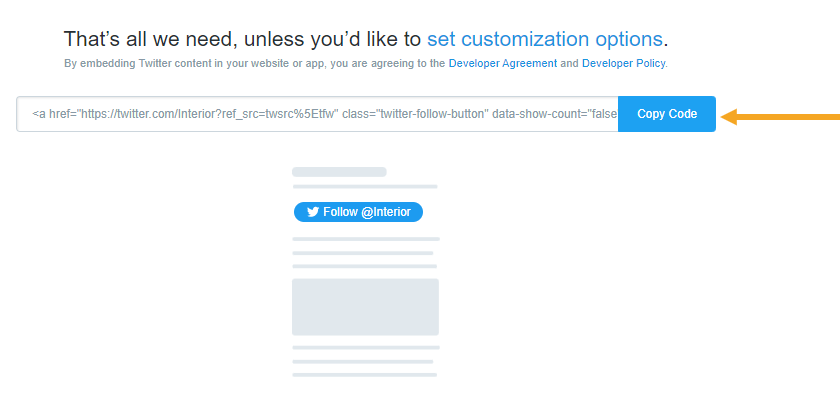
With easy-to-use controls, Twitter's shareability options are a unique benefit for any business.
Typefully’s shareable pages
As we have seen, shareability is valuable for any growing business. At Typefully, we have taken this to the next level through Typefully Profiles. Our new profiles give users beautiful, sharing pages made up of their best tweets and threads.
Rather than separating Twitter threads with unsightly tweet boxes, Typefully arranges your tweets in easy-to-follow posts. Your tweets become a storytelling tool that looks good on both mobile web and desktop formats.
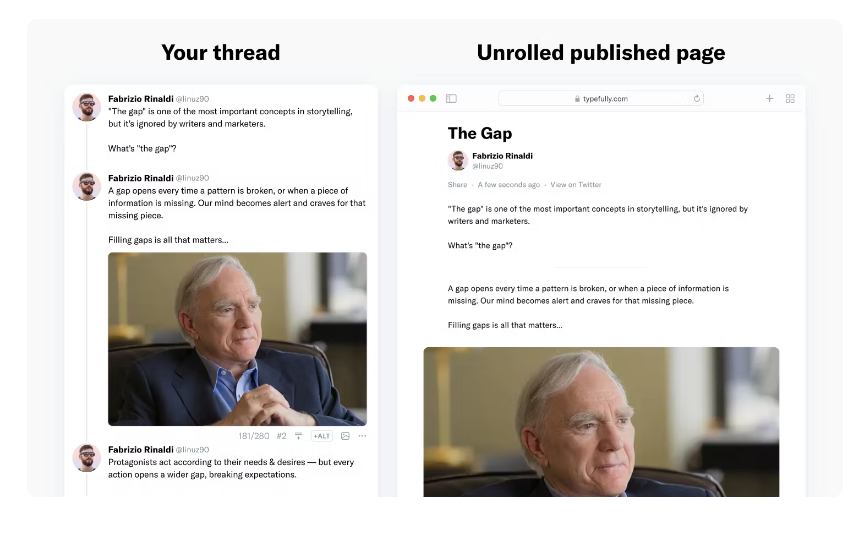
You’ve spent countless hours on your tweets, so it makes sense to show them off in a better light. With Typefully’s publish feature, your thread gets a dedicated, beautiful page for others to engage.
We refer to this process as unrolling. Imagine a tightly wound scroll where only certain parts are visible. By unrolling the scroll, you see everything as it should be, laid out in perfect order. Typefully then creates a public page for your thread, so it’s easily shareable.
Click on this video link to find out more.
And if you’re worried about your content, Typefully offers a feedback option that can be used before posting. You’re able to share your drafts for free, and users can leave comments to let creators know what they think.
You also have the option to engage with your commentators, so if you need a little more information, it’s easy to start a conversation. Your comments will only be visible to you and the users who visit your shared draft page.
Wrapping up
With the impact social media has on our digital world, it would be foolish not to embrace it. By sharing your Twitter account, you’re providing users with an experience that revolves around interaction and engagement.
By not sharing your Twitter content, you’re effectively only giving visitors half of the story. Only logged on Twitter users can experience updates when all it takes is a few clicks to share it with the world. Your goal is to grow your business, and you can’t grow without shareability…(I think Benjamin Franklin said that).
Discover
Join 190,000+ creators to grow on 𝕏, LinkedIn, Bluesky and Threads.
Level up your content with AI and boost engagement 🚀
